If you love wildlife, plants, and nature, there’s no better way to take care of the planet than by fostering biodiversity in your backyard. While it might seem intimidating initially, creating a garden that supports various species – from plants to birds and bees – doesn’t have to be complicated. We’ve got 10 simple steps to transform your garden into an oasis for nature.
Why are British gardens lacking biodiversity?

British gardens have become increasingly barren and bereft of biodiversity in recent years. This situation has been attributed to two leading causes: the growing popularity of overly-manicured lawns and potentially harmful pesticides. Generally speaking, a tidy and uniform-looking lawn requires regular trimming and weeding, which has caused many homeowners in Britain to neglect an essential part of any garden – the flower beds. Without flowers, grasses and other plant life that attract an array of bee species and other loving creatures, garden diversity dwindles over time.
Additionally, while pesticides are marketed as a necessary evil to keep away pests like rats, they also have a detrimental effect on valuable insects such as bees which play a key role in sustaining a healthy garden ecosystem. Until Britons are made more aware of these issues, it seems likely that their gardens will continue to suffer from increased levels of homogeneity accompanied by lower levels of biodiversity.
How to improve biodiversity in your garden
1) Opt for native plant species
Improving garden biodiversity is a great way to benefit the local habitat, and many British gardeners are opting for native plant species to have an even greater impact. Various plants with different flowering times can help to attract native insects, birds and other animals into the garden. Knowing which plants grow best in your local area is necessary; researching what grows naturally can be the key to successful planting and attracting more exciting wildlife. Native British garden plants include the likes of wild strawberry, primrose, foxglove and holly.
Additionally, favouring native species over more exotic varieties helps reduce the risk of invasive species that could disrupt existing ecosystems. By encouraging others to opt for native plants, gardeners can positively impact their own patch of Britain’s great outdoors!
2) Let your garden become a bit wild
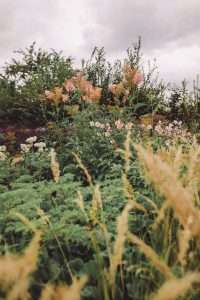
British gardens are havens for wildlife biodiversity, but if we want to increase the variety of species found in them, it is often a good idea to let them grow a bit wild. By leaving a few areas uncut and allowing native plants to flourish, you can attract far more wildlife than traditional gardening alone.
It’s also worth considering increasing the range of vegetation you have on display, from wildflowers and herbs to berry bushes or even a pond or minor water feature. As well as providing habitats for native species such as frogs and newts, these additions will also bring an array of birds and insects who might take up residence with you! Allowing your garden to become wilder can prove hugely beneficial for yourself and local wildlife – it’s a win-win.
3) Pick flowers that pollinators love
The British garden holds an abundance of wildlife that can be made even more varied and excellent with a few simple changes. Incorporating plants that attract and help pollinators can have a profoundly positive effect on biodiversity in the garden: bees, butterflies, and other creatures will flock to enjoy the nectar of these gorgeous flowers and improve life for all.
From shallow-rooted wildflower species like Poached Egg Plants and Pink Campion to deep-rooted wild prairie grasses like Big Bluestem and Little Bluestem, every flower has its purpose in creating a vibrant garden ecosystem that benefits all creatures – humans included. By picking flowers that pollinators adore, you can make a dramatic difference in your corner of the world for generations to come.
4) Grow hedges and shrubs to provide shelter
Hedges and shrubs are a great way to add rich biodiversity to any British garden. Not only do they provide shelter for a variety of wildlife, but they can also bring texture and colour to the landscape. Providing food, water, and suitable nesting sites is important for aiding biodiversity in the garden; however, providing shelter with hedges and shrubs is essential in creating a safe and inviting environment for wildlife.
Hedge-cutting techniques affect the number of birds that inhabit the hedgerow garden, making it essential to use appropriate hedge management methods when caring for them. Raised beds can also plant taller-growing shrubs, blocking off areas that would otherwise be too exposed to harsh weather conditions. This way, more wildlife can access a comfortable area where they can rest without fear of disturbance.
5) Offer food and water to birds all year
Offering food and water to birds in your British garden is a great way to boost biodiversity. In the winter, providing warmth and protection from the elements can help local bird species survive when other resources are scarce. Offering feeders and bird baths during the summer months will attract various birds, which can positively affect overall native species’ health.
Not only will this help promote British gardens as essential habitats for birds, but it can also create an enjoyable backyard experience with many desirable aesthetic advantages. It’s important to offer various types of food and adjust according to seasonal availability to provide habitat for a diverse cross-section of birds to maximize biodiversity. By helping ensure that there are balanced populations of different bird species in your garden all year round, you can significantly contribute to sustaining regional conservation efforts.
6) Don’t cut down established plants
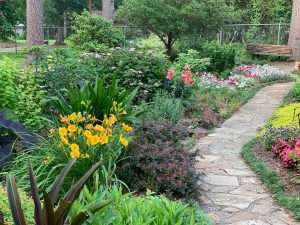
It is essential to remember that planting new species and reintroducing native wildflowers should take priority over cutting down established plants. Although cutting down plants can create some extra space for native flowers, it significantly disrupts the ecosystem, which can negatively impact the garden’s overall biodiversity.
Moreover, some creatures are dependent upon established plants to survive and flourish. Therefore, before embarking on any significant alterations in your garden, it is vital to consider the direct and indirect effects that those changes will have on wildlife species and the environment as a whole; replanting native varieties of trees and wildflowers is often a better solution for promoting biodiversity in one’s yard than removing existing flora from the area.
7) Allow your grass to grow a little longer
With spring upon us, the British garden is about to come alive. One easy way to help it reach its full potential is by allowing the grass to grow a little longer than usual. Not doing so deprives your garden of its colour and fragrance and strips it of much-needed biodiversity. Diversity among plants encourages birds and beneficial insects to frequent the area, helping keep pests in check while fertilizing pollinating plants and adding beauty to your outdoor space.
Letting grass get a bit longer signals to nature that all are welcome – letting wildflowers take over your garden and providing lush cover for animals who need it most – making it a beautiful sight and a haven outside your door. So this spring, let’s embrace our gardens with a few extra inches of growth and bear witness to the magic that can result from such an effort!
8) Make a rock garden
Rock gardens have long been a beloved feature of British gardens, providing physical interest and space to showcase endemic species that thrive in otherwise restricted spaces. To improve biodiversity in the British garden, introducing a rock garden is the most straightforward and most satisfying of projects. Rock gardens help create habitats for various plants, invertebrates and small mammals not usually found amongst other folk’s flowerbeds due to their need for rougher terrain, such as sandy banks, stony hillsides or cracking clay soils.
With careful consideration over which types of stone, surface area and plantings you choose, it is possible to create a thriving garden paradise filled with wildflowers, lichens and other fascinating native inhabitants, ultimately encouraging more species diversity than the traditional lawn-and-border combo. A simple pleasure for your eyes but, at the same time, an invaluable investment in wildlife.
9) Stop using harmful chemicals
It is becoming increasingly important that we, as gardeners and citizens of the British Isles, work to conserve wildlife by reducing our reliance on synthetic chemicals. Our gardens, full of glorious biodiversity, remain threatened by pollutants produced by the persistent use of harmful chemicals. These toxins damage the natural balance in nearby grasslands and waterways, destroying sensitive habitats and putting species at risk.
In addition to the harm that chemicals can cause to local wildlife, they can also be dangerous to our pets, particularly cats who are known to be curious and enjoy exploring outdoor spaces. Chemical pesticides and fertilizers can be ingested by cats when they lick their paws or grooming, and they may also absorb toxins through their skin, making it important to keep cats out of our gardens.
One step towards achieving a sustainable future for our gardens is to phase out synthetic chemical fertilizers, pesticides and weed killers, replacing them with more eco-friendly solutions where available. By decreasing the number of harsh compounds used for gardening, we can promote an increase in native fauna, helping our environment thrive.
10) Create a pond
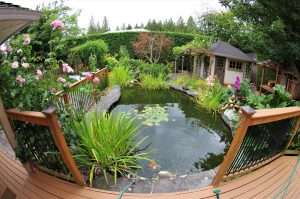
The British garden is renowned for its beauty, but many are limited in their biodiversity. Adding a pond to create a more natural environment can introduce a wealth of aquatic wildlife, bringing greater balance and stability to British ecosystems. Ponds also attract birds and amphibians that thrive on oxygen distribution when plenty of shallow areas and vegetation are nearby.
It’s easy to create your own pond habitat with specialist liners, allowing you to control the size, shape, and type of aquatic plants that you include to provide habitat for the creatures attracted by your efforts. Whether it’s dragonflies skimming over the water or frogs helping to reduce insect damage in your garden, creating a pond isn’t just functional – it has real environmental benefits for all involved!
Conclusion
Biodiversity is key to keeping our gardens and wider countryside habitats healthy and balanced. When you take action to attract more wildlife into your outdoor space, it can become a haven for birds, butterflies, moths, bees and much more. All the small steps you have read about here make a big difference to the garden’s wildlife. Just one person taking the time to make their space more suitable for nature can positively impact the environment far beyond their own garden’s boundaries. So why not start today and create an oasis of biodiversity in your British Garden?
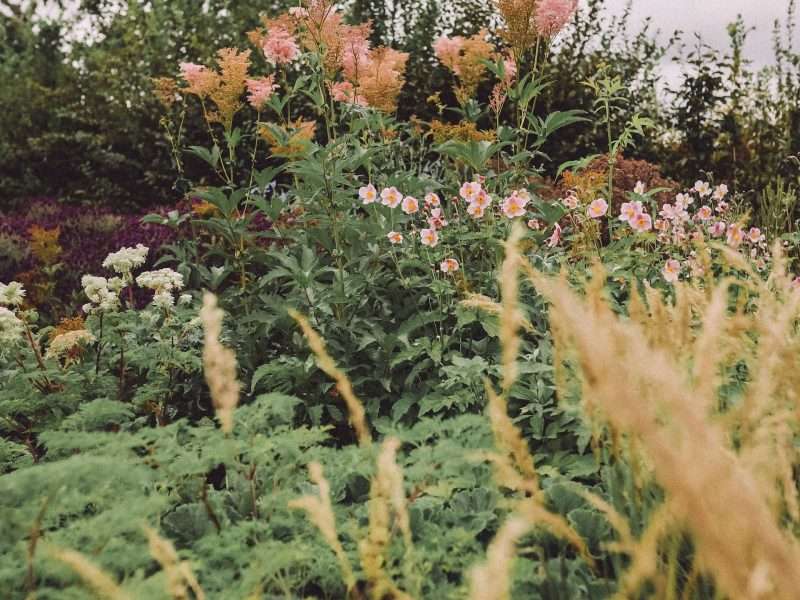

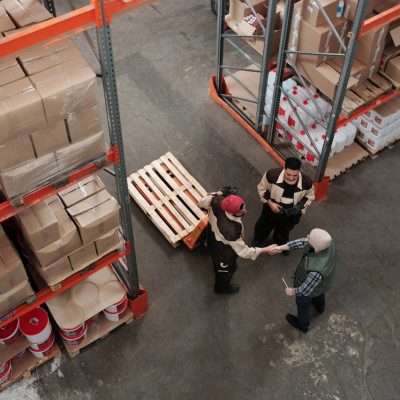
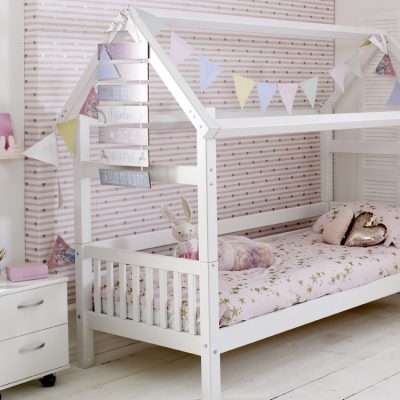
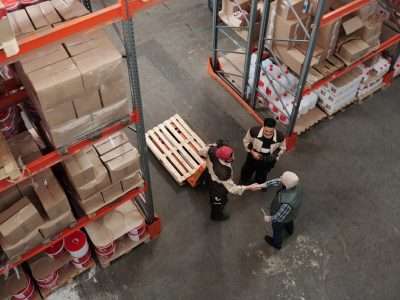
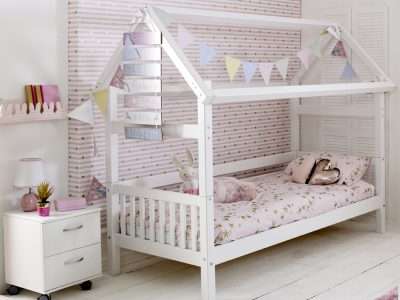
Comments